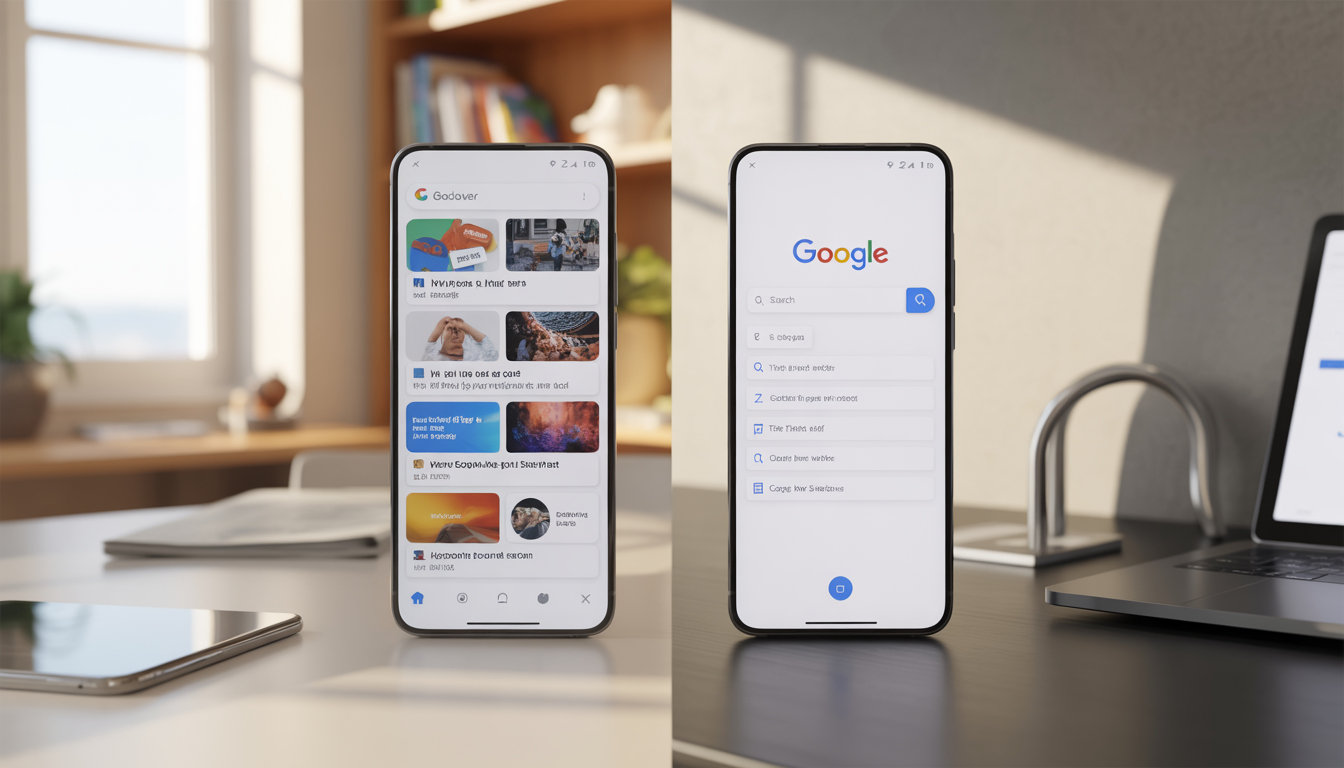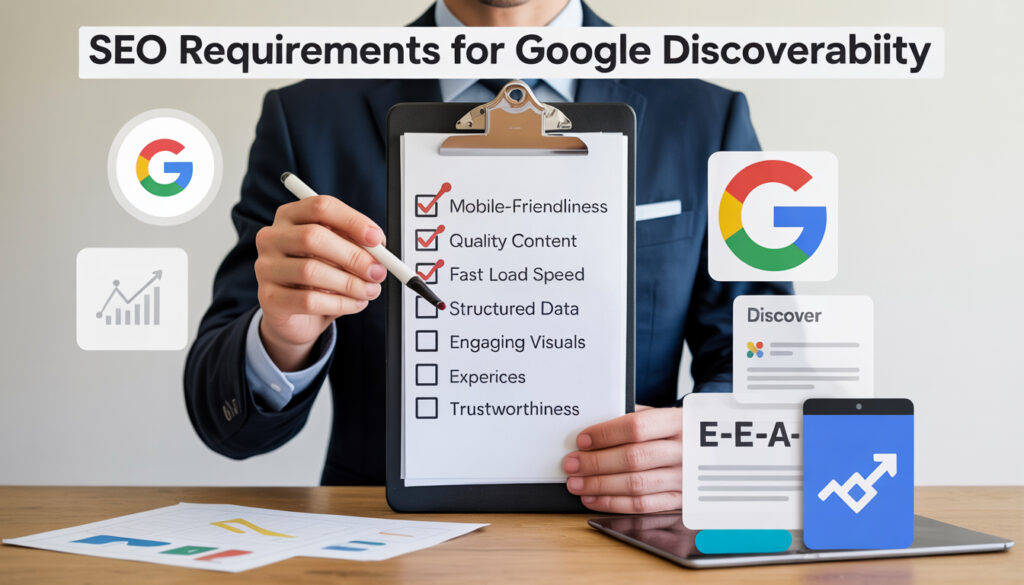
Google Discover vs. Google Search
Google Discover vs. Google Search: In 2026, the way we find information online is more dynamic than ever. The days when search meant simply typing a question into a box are long gone. Now, two powerful tools—Google Discover and Google Search—shape how billions of people connect with content every day. While both are part of the Google ecosystem, they work in very different ways, and understanding those differences is crucial for anyone who wants their content to be seen.
Google Search is the classic tool: you ask, it answers. But Google Discover is more like a personal newsstand, curating articles, videos, and stories based on your interests, habits, and what’s trending. As artificial intelligence and user behavior signals become more important, the rules for getting your content noticed are changing fast. Whether you’re a publisher, marketer, or business owner, knowing how to optimize for both platforms is now a must—not just a nice-to-have.
In this article, we’ll break down the latest ranking factors, content policies, and optimization strategies for both Google Discover and Google Search. We’ll look at what sets them apart, what they have in common, and how you can make sure your content stands out in 2026’s crowded digital landscape.
Google Search is query-based. You type or speak a question, and Google returns a list of results that best match your intent. It’s all about relevance, authority, and how well your content answers the user’s question.
Google Discover, on the other hand, is a personalized feed. It doesn’t wait for you to ask. Instead, it predicts what you might want to read or watch next, based on your search history, app activity, location, and interests. The feed updates constantly, surfacing news, evergreen articles, videos, and more—no search required .
The difference is more than technical. It changes how you approach content creation and optimization. For Search, you focus on keywords, structure, and intent. For Discover, you need to think about trends, visuals, and what will catch someone’s eye as they scroll.
Also Read: Best SEO Course in Kapurthala, Learn from Experts & Boost Your Career 2026

In 2026, AI Overviews—formerly known as Search Generative Experience—are a major part of the search results page. These AI-generated summaries pull information from multiple sources to give users direct answers at the top of the page. As of late 2025, about 15% of search results feature an AI Overview, and this number is growing fast. For some queries, this means fewer clicks on traditional links, as users get what they need right away .
Google’s algorithms now focus more on user intent and engagement. It’s not just about matching keywords; it’s about understanding what the user really wants. Behavioral signals—like how long someone stays on your page or whether they click through to other content—are more important than ever .
Google’s E-E-A-T guidelines are at the heart of ranking. Content that demonstrates real-world experience, expert knowledge, and trustworthiness is rewarded, especially for sensitive topics like health or finance . Author bios, transparent sourcing, and up-to-date information all help boost your E-E-A-T score.
Fast load times, mobile-first design, and a clean site structure are non-negotiable. Google uses Core Web Vitals—metrics like page speed and layout stability—as ranking signals. Structured data (like schema markup) helps Google understand your content and increases your chances of being featured in rich results or AI Overviews .
Google is giving more weight to authentic, user-generated content from platforms like Reddit and Quora. Brand reputation, mentions, and a strong off-site presence also help build trust and improve rankings .
Also Read: Choosing the Right Digital Marketing Agency: What to Look for in 2026
Discover is all about personalization. The algorithm builds a profile of each user’s interests and surfaces content that matches. Engagement signals—like clicks, shares, and time spent on page—help determine what gets shown to similar users .
Trending topics and timely news are favored. If your content taps into what’s hot right now, you’re more likely to be featured. That said, evergreen content can also perform well, especially if it’s updated and remains relevant .
Images are king in Discover. Articles with large, high-quality images (at least 1200px wide, 16:9 ratio) stand out in the feed and get more clicks. Using the max-image-preview:large meta tag ensures your images display at full size .
Headlines should be intriguing but accurate. The sweet spot is 40–59 characters, and including dates or clarifying context can help signal freshness. Avoid clickbait—misleading headlines can get your content excluded from Discover .
Just like Search, Discover values content that demonstrates expertise and trust. Author bios, original insights, and clear sourcing all help. Content must be genuinely helpful and solve real problems for users .
Fast, mobile-optimized pages are essential. Discover is primarily accessed on mobile devices, so a smooth user experience is a must .
Also Read: Social Media Marketing Strategies That Work in 2026

Both Google Search and Discover use E-E-A-T as a framework for evaluating content quality. This means your content should:
For topics that impact people’s health, finances, or safety (YMYL—Your Money or Your Life), the standards are even higher .

Also Read: PPC Advertising Trends: Maximizing ROI with Google Ads in 2026
max-image-preview:large for better visibility .
Also Read: AI in Digital Marketing: Smarter Tools, Automation, and Real Results in 2026
Google Search is query-based, showing results when users type or speak a question. Google Discover is a personalized feed that suggests content based on user interests and behavior—no search required .
Focus on trending topics, use large original images, write compelling headlines, demonstrate E-E-A-T, and ensure your site is mobile-friendly. Regularly update your content and monitor performance in Google Search Console .
Key factors include user intent, E-E-A-T, technical SEO (Core Web Vitals), structured data, and engagement signals. AI Overviews and personalization are also increasingly important .
Yes. Discover has strict rules against clickbait, misleading headlines, and unclear authorship. Content must be visually rich, trustworthy, and mobile-optimized .
No. Discover traffic is often volatile and can fluctuate due to algorithm updates or changes in user interests. It’s best viewed as a supplement to more stable Search traffic .
The world of search is changing fast. In 2026, success on Google means understanding the unique roles of both Google Discover and Google Search. While Search remains the go-to for stable, query-driven traffic, Discover offers the chance for explosive, personalized reach—if you know how to play by its rules.
Focus on quality, trust, and user experience. Stay on top of trends, use compelling visuals, and always put your audience first. By following the latest ranking factors, content policies, and optimization strategies, you can ensure your content stands out—no matter how the algorithms evolve.